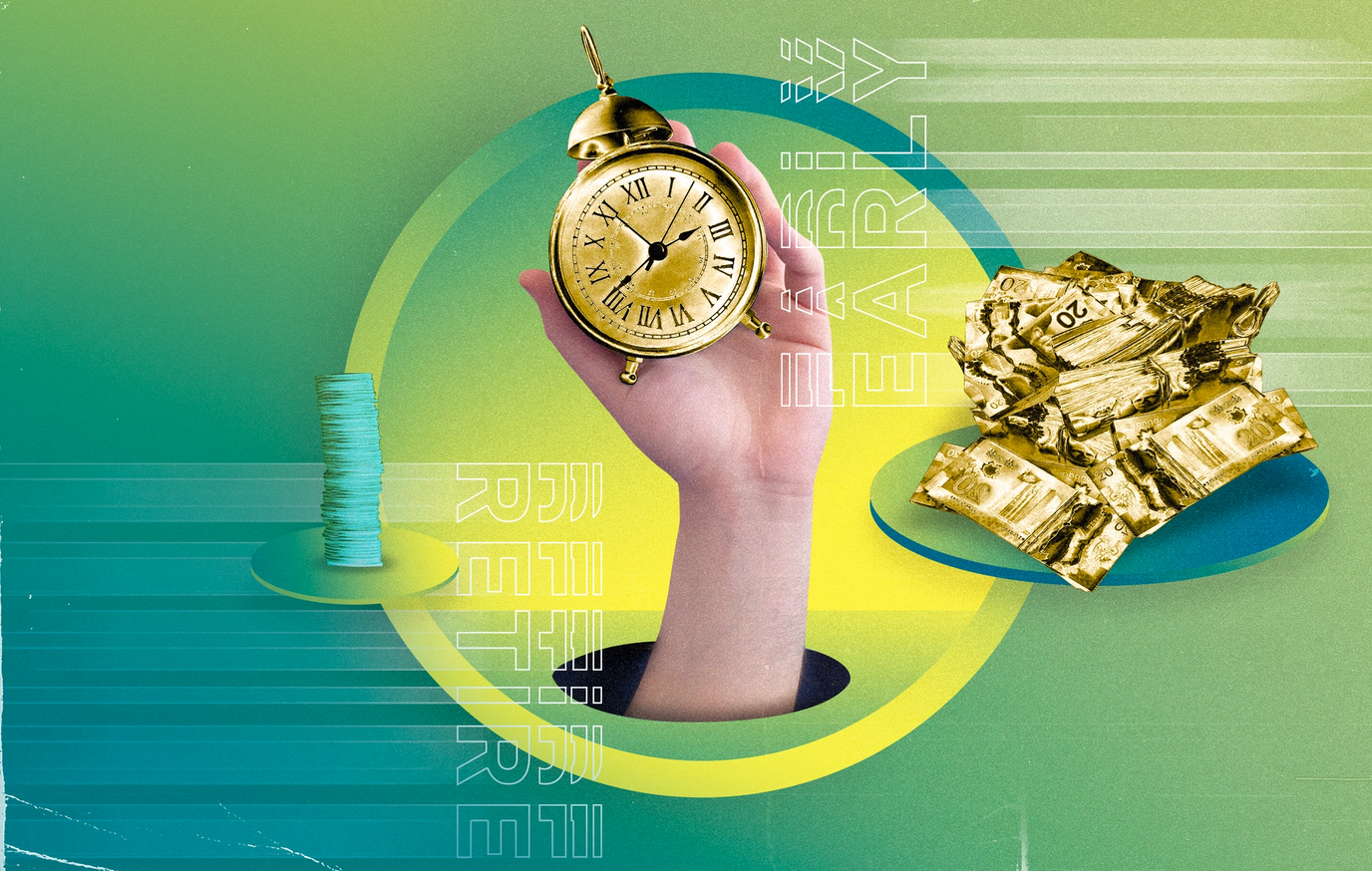
So, you've just remembered that your phone bill was due yesterday. In the rush of everyday life, keeping up with every single payment detail can be overwhelming. This is where the convenience of recurring payments comes into play.
Imagine a system where your phone bills, gym memberships, and other regular expenses are automatically taken care of, month after month, without you lifting a finger. Deducted from your account on the same day each period, it ensures you never miss a payment again.
This article on recurring payments will explore how they work, their advantages, different available types, and how they can significantly enhance customer experience by offering a seamless, efficient, and reliable method of handling transactions.
Welcome to the streamlined world of recurring payments, designed for the modern consumer and business to sync with their financial commitments effortlessly.
What are Recurring Payments?
Recurring payments are automated transactions where a customer agrees to have a specific amount deducted from their bank account or regularly charged to their credit card. This financial arrangement is especially beneficial for subscription-based services, utilities, and any scenario where regular, consistent payments are required.
Let's explore the types and common examples of recurring payments.
Recurring Billing
Recurring billing is the process that underpins recurring payments. It automatically charges customers for goods or services at predetermined intervals, such as monthly or annually.
This system is ideal for businesses and organizations that offer subscription services, allowing for a steady and predictable revenue stream while offering customers convenience and reliability.
Fixed Recurring Payments
Fixed recurring payment refers to transactions of the same amount at regular intervals. These are common for services where the cost doesn't change from period to period or payment cycle, such as a monthly subscription to a streaming service or a gym membership.
Fixed payments simplify budgeting for the customer and the business, as the amounts to be paid or received remain constant.
Variable Recurring Payments
Variable recurring payments fluctuate in amount. This variability can be due to usage levels, such as utility bills where the monthly charge depends on consumption or billing structures that adjust based on certain conditions.
Despite the amount changing, the payment is still automatically processed at regular intervals, providing flexibility that can be advantageous in managing expenses that aren't consistent.
Other Types of Recurring Payments
Recurring payments can be broadly categorized into fixed and variable payments. However, within these categories, there are numerous subtypes tailored to specific business models and customer needs, including:
Subscription Models
In the subscription business, especially with streaming services, subscription models utilize recurring payments to access digital content. Customers enjoy uninterrupted service as fees are paid automatically, ensuring consistent revenue for providers.
Installment Payments
Installment payments break down the cost of high-value items into manageable amounts paid over time. These payments are made automatically according to a set schedule, making expensive purchases more accessible and ensuring timely collection for businesses.
Common Examples of Recurring Payments
Many everyday transactions are facilitated by recurring payments, showcasing their versatility and widespread application. For example:
Mortgage Payments
In Canada, homebuyers often use recurring payments to manage their mortgage responsibilities. This can include regular mortgage payments and mortgage down payments in Canada, where initial lump sums are spread over a period, and accelerated mortgage payments, a strategy to decrease interest by increasing the payment frequency or amount.
Credit Card Management
Recurring payments are a reliable method for handling credit card bills, significantly reducing the risk of missing a credit card payment. This system is particularly beneficial for individuals with credit cards for people with bad credit, as timely payments can help boost credit scores over time.
Bank Account Transfers
The ability to set up automatic, recurring transfers between bank accounts simplifies finance management, whether for savings, investments, or bill payments. This automated approach ensures that funds are consistently allocated as intended without manual intervention each time.
These examples highlight the adaptability of recurring payments in managing various financial commitments, from mortgages to credit management and routine transfers between accounts.
Pricing Models for Recurring Payments
Recurring payment models have transformed how businesses and customers manage transactions, leveraging automated recurring payments for efficiency and convenience. Here's a brief overview of common pricing models for recurring payment processing:
Flat-Rate Pricing
Flat-rate pricing offers a consistent charge for access to services or products, simplifying budget management. Payments are typically automated directly from the customer’s bank account. Magazine subscriptions use flat pricing, for instance.
Tiered Pricing
It provides different service levels or product access at varying price points, allowing customers to choose based on their needs. This model benefits from the automated nature of recurring payments.
Usage-Based Pricing
Charges are based on the actual usage of a service or product, requiring a payment processor capable of handling variable billing. This model aligns costs closely with consumption.
User-Based Pricing
Costs depend on the number of users accessing a service, common in SaaS platforms where quantity-based billing is needed. It scales pricing with the use size, facilitated by secure and reliable recurring payments.
Each model offers distinct advantages, ensuring businesses can maintain a steady cash flow and customers can select the product or service that matches their consumption, all supported by an efficient recurring payment system from the customer’s bank account through a dedicated payment processor.
Benefits of Recurring Payments for Businesses and Customers
Recurring payments have revolutionized how transactions are conducted, offering significant benefits for businesses and customers. By automating the billing cycle, these payments have streamlined financial operations, enhancing convenience and reliability for all parties involved.
Benefits for Businesses
For businesses, especially subscription businesses, the ability to accept recurring payments translates to a more predictable and steady cash flow. This predictability allows companies to better forecast how much revenue they can expect each billing cycle, making financial planning and growth strategies more manageable.
Furthermore, automatic payments reduce the need to send payment reminders, saving time and administrative costs. When customers authorize using their payment details to set up a subscription payment, it also reduces the friction in the payment process, potentially lowering the chances of cart abandonment.
This streamlined process makes it easier for businesses to accept payments and enhances customer retention by providing a hassle-free payment experience.
Advantages for Customers
For customers, the advantages of recurring payments lie in their convenience and time-saving benefits. Automatic payments eliminate the need to manually enter payment details for each transaction, ensuring that payments for subscription services or regular bills are never missed.
The automation also means that customers don't have to remember payment deadlines or spend time setting up payment reminders for each billing cycle. Instead, the agreed-upon amount is automatically deducted from the customer's account at each billing period, ensuring uninterrupted service access.
The seamless payment experience fosters greater trust and satisfaction with the service provider, as customers appreciate the ease with which they can manage their finances and ensure timely payments without the hassle of manual intervention.
How To Implement Recurring Payments
Implementing recurring payments involves two straightforward steps, ensuring a seamless transaction process for businesses and customers.
Payment Setup
While signing up, customers provide and authorize payment information for future transactions, agreeing to a billing schedule. This information is securely stored in recurring payment software of recurring payment processors, adhering to strict industry standards for data protection.
Payment Collection
The system then automatically processes payments at predefined intervals, with customers receiving confirmations and necessary notifications regarding their transactions or failed payments. Customers can update their payment details or manage their subscriptions as needed to accommodate changes.
Additionally, services like KOHO prepaid card now support pre-authorized debits, enabling users to easily schedule recurring payments to the merchant account for various services directly from their account, enhancing the convenience of managing regular financial commitments.
Wrapping Up
The recurring payment model has significantly streamlined how businesses and customers handle regular transactions. By adopting a suitable payment method and leveraging payment gateways for secure processing, companies can ensure the safe storage of billing information, minimizing the hassle for both parties.
This convenience boosts customer satisfaction by simplifying the payment process and fosters customer loyalty, as users appreciate the reliability and ease of managing their subscriptions and recurring payments.
Ultimately, the recurring payment model represents a win-win for businesses and customers alike, marrying convenience with security to enhance the overall transaction experience.

About the author
Nick is a freelance writer and entrepreneur with a particular interest in business finance. He's been featured in publications like Popular Mechanics and Apple News
Read more about this author